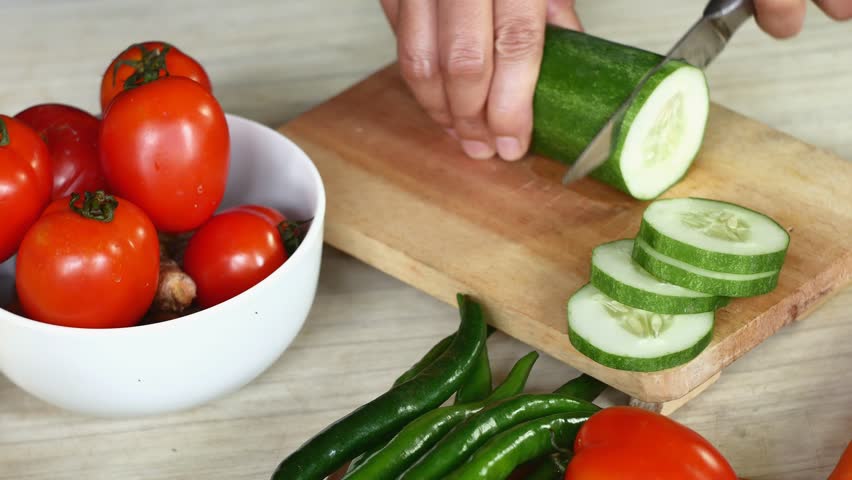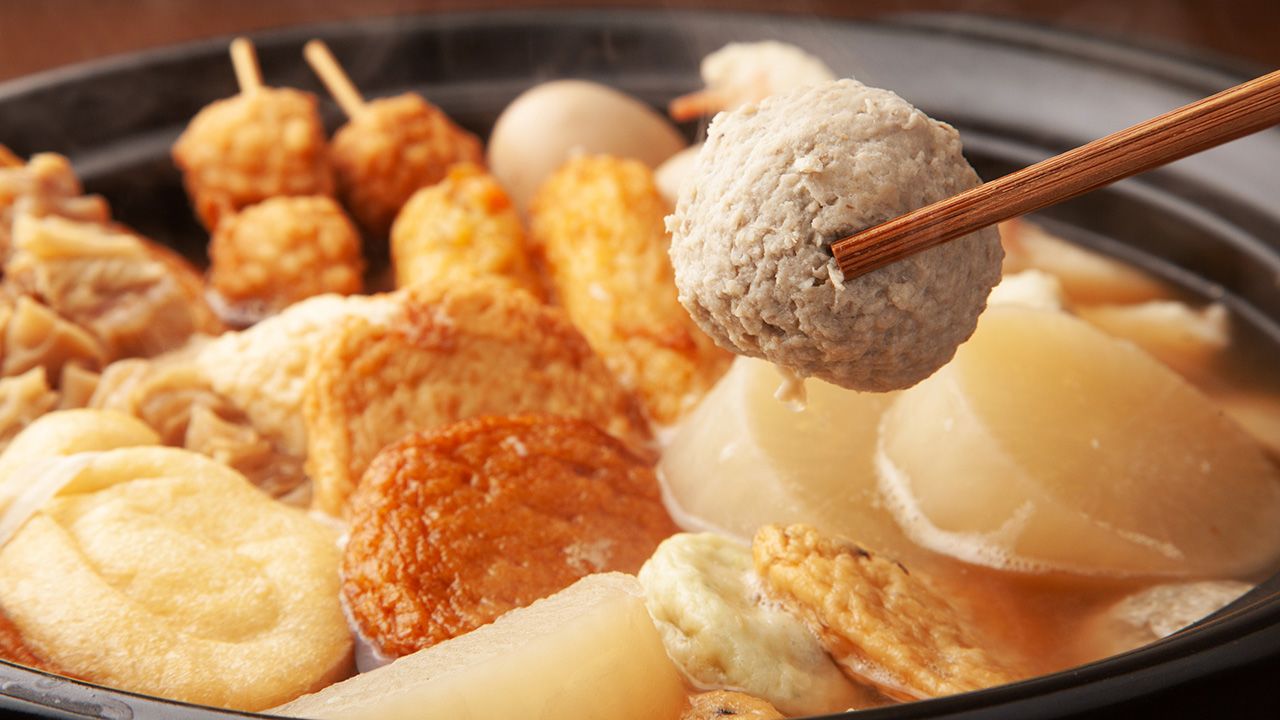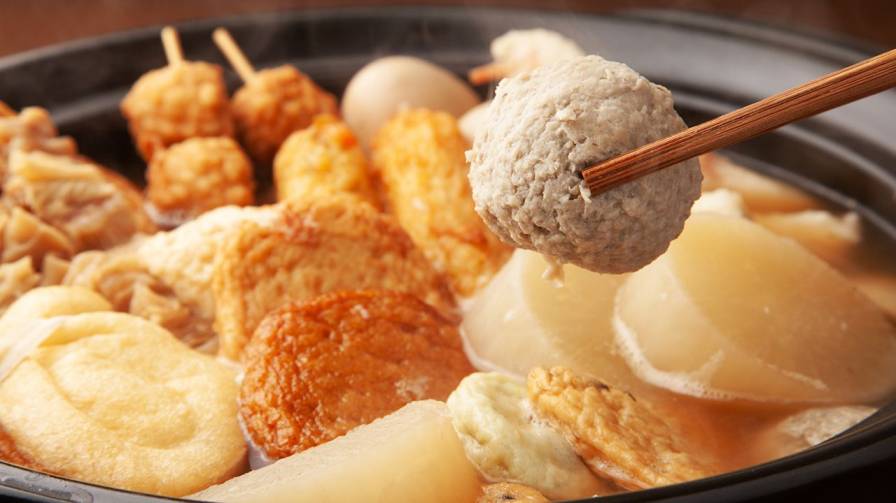Cooking and eating make up a large portion of our everyday lives. Whether you are dining out in London, taking a cooking class in Bangkok or inviting a foreign friend over for a home-cooked meal, vocabulary and idioms related to cooking are vital to have in your repertoire. Let’s go through the steps of preparing a meal from scratch together and pick up some useful words and phrases along the way.
It all starts with the ingredients
When preparing a meal, the first step is to choose the ingredients (foods or substances that are combined to make a dish) that we will use. These will come from the food groups of vegetables (such as carrots and broccoli), fruit (such as apples and berries), protein (such as meat, fish, eggs or tofu), dairy (such as cheese and milk) grains (such as rice and pasta) and legumes (such as beans, lentils and chickpeas). In addition to these food items, we also need to include some herbs or spices to season the dish and give it ample flavour. Herbs include basil, thyme and parsley while spices include curry powder, chillies and cumin.
Depending on the cuisine (style of cooking from a particular country) that your chosen dish comes from, you might need to source specific ingredients. For example, Indian cuisine tends to incorporate more dried spices like turmeric, while Chinese cuisine often uses condiments (substances to add flavour) like soy sauce and sesame oil.
Preparing the food

Once we have gathered our ingredients, we begin manipulating them to make them easier to cook or more pleasant to eat. These preparations include peeling (removing the skin with a peeler), cutting (slicing into pieces with a knife), grating (shredding into pieces using a grater) or soaking (submerging in water for a length of time). We might also need to mix (combine using a spoon or whisk) certain ingredients together – particularly when making sauces or dressings, or mash (press into a soft mass) and blend (mix at a high speed in an electric blender) ingredients so that they become softer and smoother in texture.
If we are following a recipe (step by step guide of how to make a dish), it will indicate the amounts of each ingredient to use, as well as the entire preparation and cooking method. It should also give the number of servings (quantity of food suitable for one person) that the recipe will make so that you can ensure you have enough food for the amount of people that you are cooking for.
Cooking methods
Now comes the fun part – the cooking! There are various ways that we can cook our ingredients, which all involve applying heat to the food to take them from a raw (uncooked) state into a cooked state. Some methods require oil (such as olive oil, sunflower oil or vegetable oil), and some just water.
The oil-based methods are frying/sauteing (heating a small amount of oil in a pan on the stove and cooking the ingredients in the oil, moving them around in the pan until the heat has penetrated the food fully), deep frying (heating a large amount of oil in a pan and submerging the food in the hot oil until fully cooked) and roasting (laying the ingredients on a baking tray in the oven with some oil and heating until it is fully cooked).
The healthier, oil-free cooking methods are boiling (submerging the ingredients in rapidly boiling water until cooked) and steaming (placing the ingredients on a tray with holes that rests above a pot of boiling water, allowing the steam to rise and cook the food).
Tastes and textures
Although it is possible (and sometimes preferable) to eat some foods raw, cooking changes the tastes (flavours) and textures (consistency and feeling) of food in an exciting way. Certain foods have a naturally sweet (sugary) or salty (savoury) flavour, which can be enhanced when adding heat or combining with additional ingredients. Other ingredients may be naturally sour (acidic like lemon and vinegar) or bitter (sharp or pungent in taste, like alcohol) and can be more pleasant to eat when paired with sweet or salty ingredients.
These intense flavours can also balance each other out beautifully when mixed in the right proportions, giving an even more delicious taste to a dish when combined.

Examples of these tasty flavour combinations are certainly present in Thai cuisine, where a balance of sweet, salty, sour and spicy (hot from chili) is achieved.
Applying heat through different cooking methods also changes the texture of food in a tantalising way. Frying and roasting can make food crispy and crunchy (firm, dry and brittle like fried chicken or potato chips) while boiling and steaming can make food soft, creamy and smooth (like macaroni and cheese pasta). This variety in tastes and textures is what makes a well-cooked meal so delicious and enjoyable to eat.
What’s your English level?
Find out by completing one of our level tests!
What’s your English level?
Find out by completing one of our level tests!
Idioms related to cooking
Now that we know lots of vocabulary related to the cooking process, let’s go over a few idioms which use cooking scenarios to illustrate a wider meaning:
Too many cooks spoil the broth
This proverb means that if there are too many people working on a task together, the outcome will be bad or it will fail. E.g. The teacher split us into groups of 10 for the assignment, but I think too many cooks will spoil the broth!
Cooking up a storm
This interesting idiom has several different meanings (to make trouble or to make a big fuss about something), but it also has a more informal meaning which is to prepare a large amount of food. E.g. Mark is cooking up a storm in the kitchen for his in-laws tonight!
Another idiomatic meaning is more negative, and it is that someone is making a big fuss and generating a lot of unnecessary talk or activity. E.g. The protestors cooked up a storm outside the White House after Trump lost the election.
If you can’t stand the heat, get out of the kitchen
This cooking idiom means that if you cannot handle the pressure of a job or situation, you should leave and let others take over rather than complain about the challenges. E.g. Our football captain keeps complaining about all of the responsibilities he has, but if he can’t stand the heat he should get out of the kitchen.

This article was written by Break Into English’s online teacher and blog contributor Kirstyn Liang.








